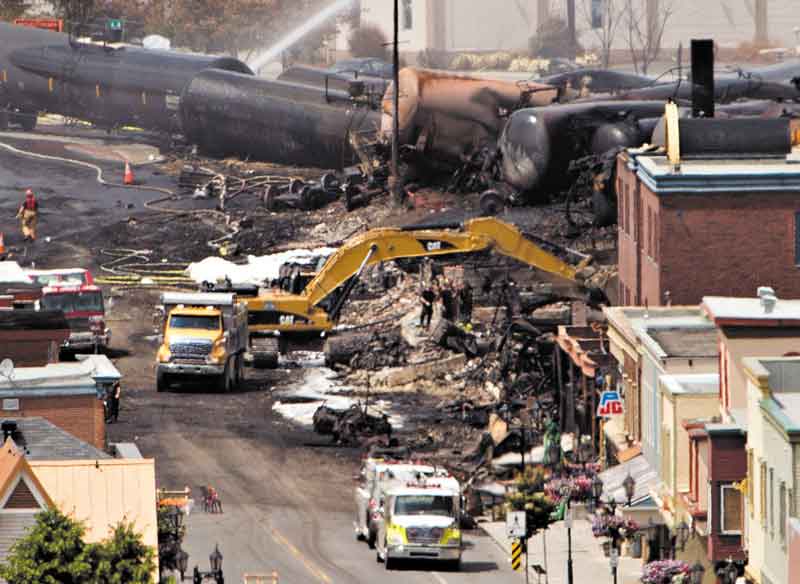While investigators are still trying to piece together exactly why a runaway train loaded with crude oil derailed and exploded in Lac-Megantic, Quebec, last week, there are some things we know for sure.
The crash was horrible and the price was too heavy to bear. At least 50 people lost their lives. A significant section of a town was knocked off the map and burned beyond recognition. The train’s owner had insurance, but the company’s coverage is not expected to be nearly enough to pay for the expected claims.
The train that exploded was headed for Maine, and a crash like this could just as easily have happened here. Nearly 5.3 million barrels of oil were transported across Maine last year on trains just like the one that destroyed Lac-Megantic.
These costs are worth remembering when we discuss the relative costs of different types of energy. Oil and gas look inexpensive when compared to renewable alternatives, but not when you consider the environmental damage that comes with extracting, transporting and using fossil fuels.
For decades, we have been overly reliant on foreign oil. While that was not good for our economy and national security, it did insulate us from the kind of disasters that we have just witnessed in Quebec and other North American locations.
The Deep Water Horizon spill in the Gulf of Mexico was an appalling disaster, but it wasn’t as bad as the Niger Delta in Africa where just as much oil is spilled every year without much effort to clean it up.
Pipelines maybe a safer way to move crude oil than trains or ships, but they pose other risks. The 2010 Kalamazoo River spill in Michigan or the recent pipeline rupture in Arkansas shows that pipelines can fail. Cleanup is expensive and imperfect.
After the oil has been transported and refined, it creates more environmental hazard by releasing carbon into the atmosphere. Polar ice is melting, sea levels are rising and the chemical composition of ocean water is changing. This likely will result in property damage and affect fisheries and other industries.
None of these consequences makes oil look cheap, or makes moderate subsidies to deploy new technologies such as solar, tidal and wind power appear excessive. These factors also should be weighed when we discuss the visual impacts of wind turbines on ridge tops.
When we fail to invest in energy other than oil and gas, we accept the costs that come with fossil fuels.
Lac-Megantic shows that those costs go deeper than the price per gallon of gasoline at the pump. We also should factor in the horrendous damage done to people and the environment that comes with our thirst for “cheap” energy.
Copy the Story LinkSend questions/comments to the editors.



Success. Please wait for the page to reload. If the page does not reload within 5 seconds, please refresh the page.
Enter your email and password to access comments.
Hi, to comment on stories you must . This profile is in addition to your subscription and website login.
Already have a commenting profile? .
Invalid username/password.
Please check your email to confirm and complete your registration.
Only subscribers are eligible to post comments. Please subscribe or login first for digital access. Here’s why.
Use the form below to reset your password. When you've submitted your account email, we will send an email with a reset code.